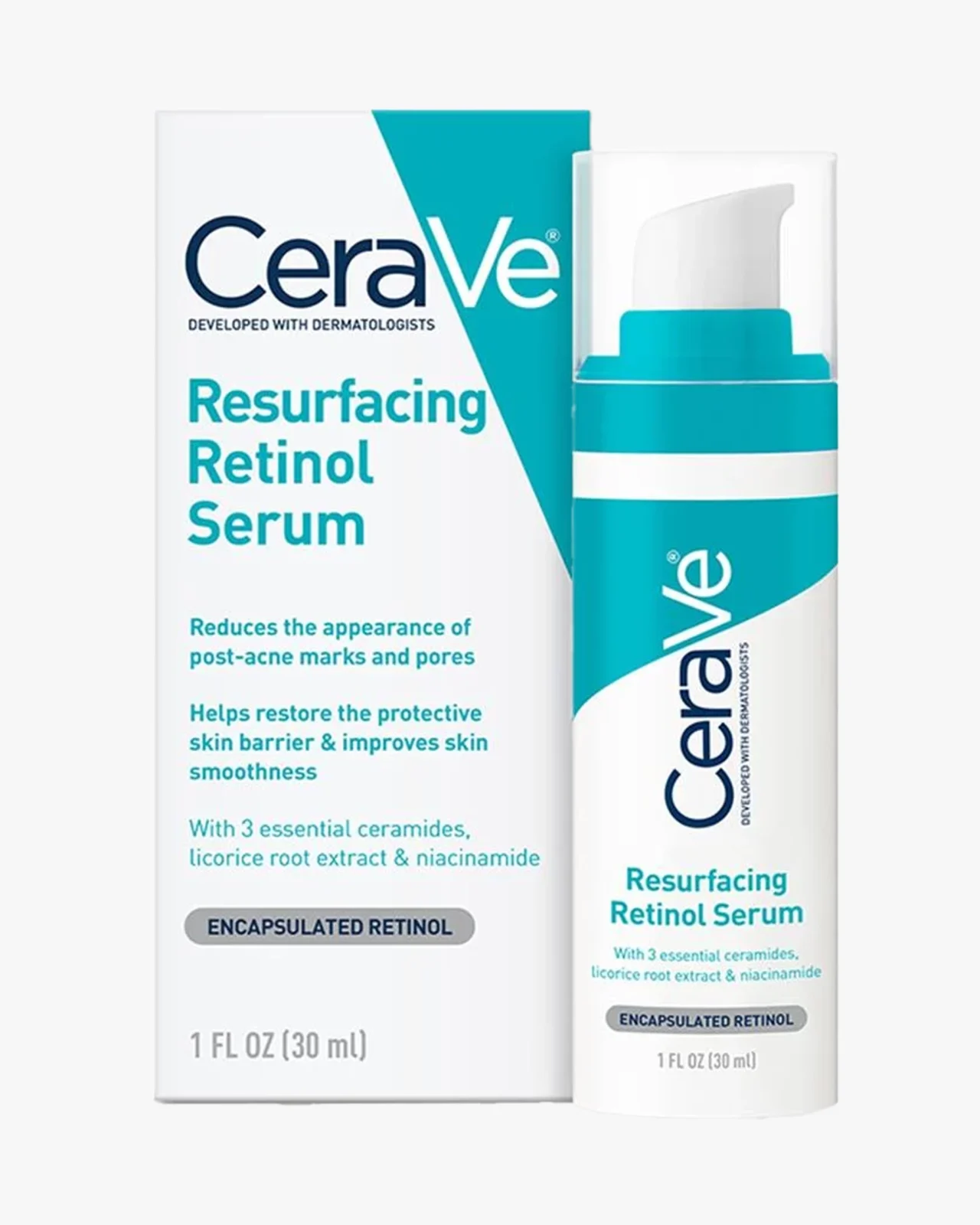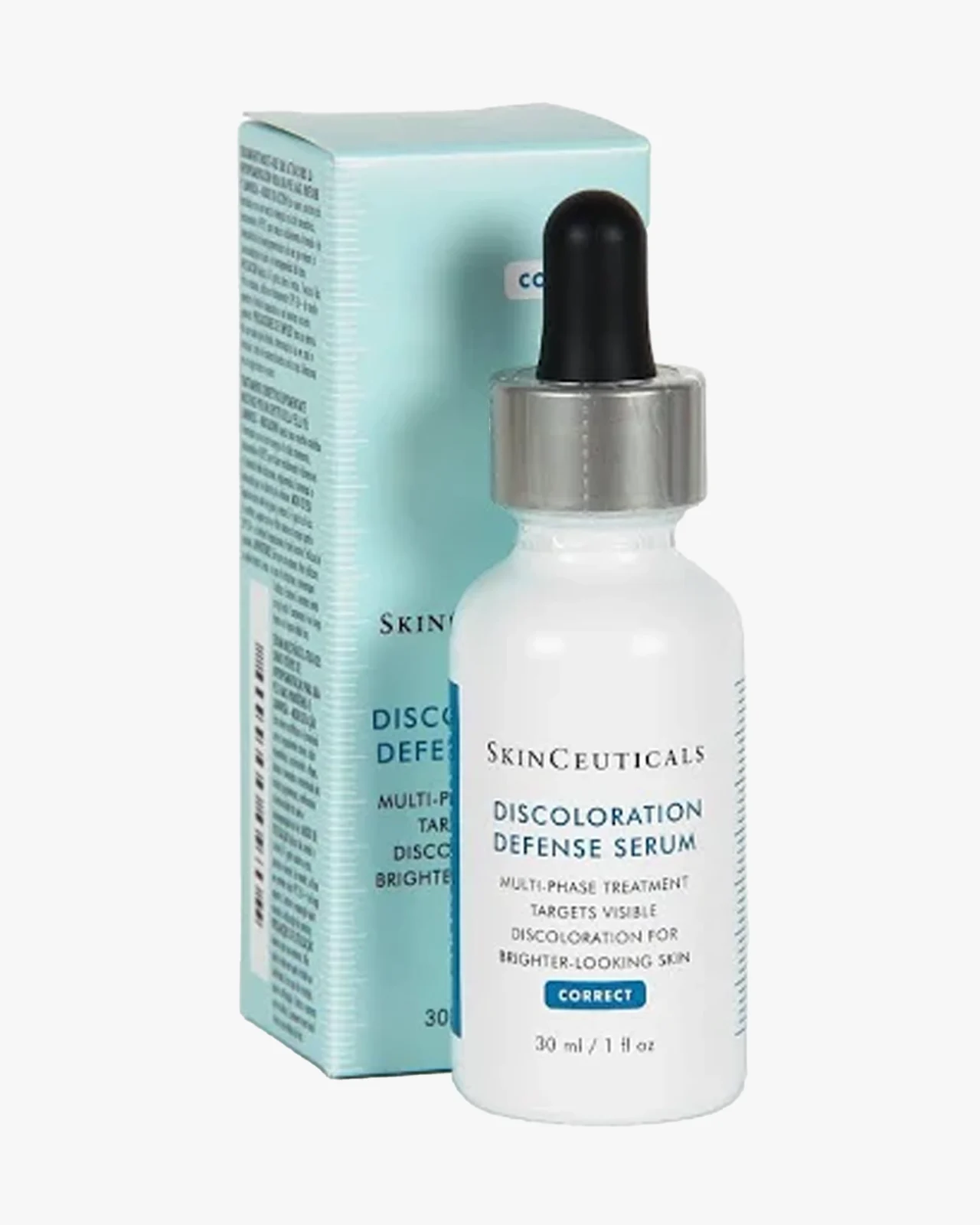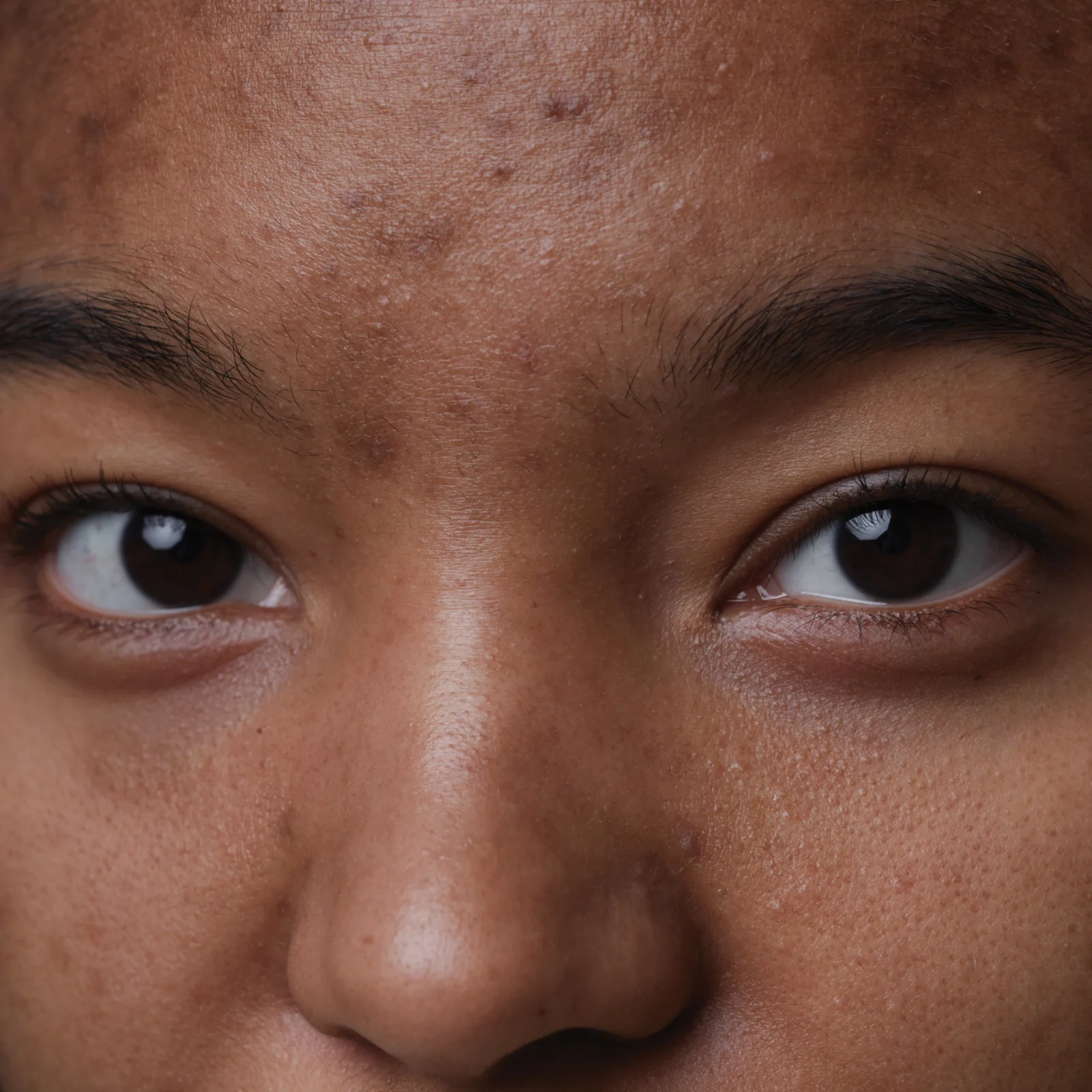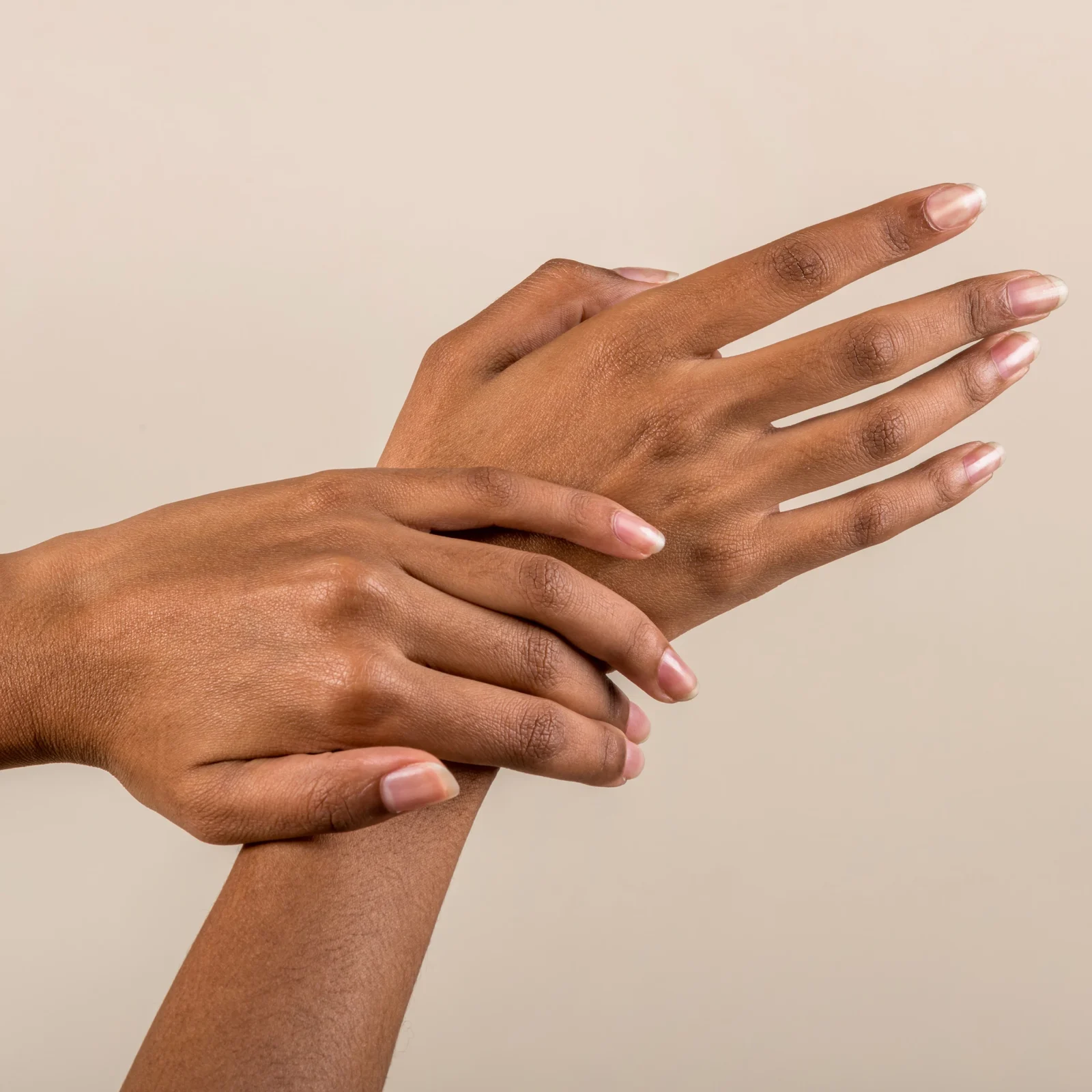A Comprehensive Guide to Skin Conditions for Darker Skin
We spoke to dermatologists about the skin conditions that are most common for brown skin. Consider this your comprehensive guide to identifying—and treating—a number of ailments, including everything from melasma to keloids to hyperpigmentation.
By Sierra Leone Starks and Lia Cruz
Skin is such a critical and complex part of the human body. Add a dash of melanin, and it’s no surprise that it makes for even more complexities. Still, darker skin, in all its glory, should be celebrated and cared for, notes Susan C. Taylor, MD, a board-certified dermatologist in Philadelphia.
First, what is melanin and how does it work?
Before we talk about how to properly treat melanin-rich skin, it’s important to know exactly what melanin is. Melanin is the pigment that causes your skin color. There are two types of melanin: eumelanin (brown pigment) and pheomelanin (yellow pigment). Jenna Lester, MD, a board-certified dermatologist based in San Francisco, says most people have some sort of balance of the two types of melanin.
Depending on a person’s skin color, they may have more of one type than the other. In general, eumelanin is more prevalent in people with darker skin. “So it’s not that people with dark skin have more melanin, they just have more of a different type of melanin,” says Dr. Lester.
Melanin is produced in cells called melanocytes, which are present in the lower layer of the skin, says Dr. Taylor. After making melanin, the melanocytes put it into packages called melanosomes, which are then transferred into the skin cells. In addition to providing pigmentation, melanin also serves as a protective agent. For example, eumelanin protects you to some extent from burning when exposed to the sun, says Dr. Taylor.
Board-certified dermatologist Ada Atilano-Bautista, MD, head dermatologist at PROFERO Ageless Aesthetics, previously spoke to Allure Philippines about melanin, and confirms that Filipino morena skin is found to have high levels of eumelanin. “The eumelanin not only gives morena skin its radiant tone, but also contributes to its built-in natural defense against UV rays,” she says.
Common skin conditions that impact dark skin tones
But even with the presence of more eumelanin, darker skin tones are still more susceptible to certain skin conditions. In this guide, we’ll dive into the most common skin conditions for those with darker skin, breaking down exactly what you need to know to identify—and treat—them.
Post-inflammatory hyperpigmentation
Post-inflammatory hyperpigmentation (PIH) is a result of injury to the skin, be that acne, a burn, insect bites, or any other damage. Because skin of color has more brown pigment, there is more of a chance for PIH, says Michelle Henry, MD, a board-certified dermatologist in New York City.
“Those little melanosomes are full of pigments, and they’re so full that they’re almost bursting,” she explains. “So that means anything can kind of bump them and cause them to leak.” Leakage of that dark-colored pigment results in hyperpigmentation (which is, essentially, more color) in areas of the skin where it typically isn’t. Cue those dark marks or spots left behind after a pimple.
Tricia Pontejos-Canivel, MD, a board-certified dermatologist at Skin MD in Pasig City, says that this is very common in Filipinos with darker skin, with scratches, burns, eczema, and acne being some of the most common causes.
When it comes to the treatment of hyperpigmentation, Massachusetts-based board-certified dermatologist Uchenna Okereke, MD, says studies have shown sunscreen use alone can help significantly reduce the appearance of dark marks in darker skin.
“Consistent use of sunscreen is really the first step in treating hyperpigmentation,” she says. “Sunscreens with physical blockers like zinc oxide and titanium dioxide help block harmful UV rays from the sun, which will prevent worsening of dark marks.”
There are a number of ingredients and topical lightening agents or procedures that can be used to help improve hyperpigmentation. Dr. Pontejos-Canivel and Dr. Okereke both advise seeing your board-certified dermatologist to help identify which are best for you.
Many times, there are over-the-counter options to help treat discoloration due to hyperpigmentation. We like CeraVe Resurfacing Retinol Serum, formulated with niacinamide and retinol.

Melasma
Melasma is an acquired skin condition that presents as darkened patches on the skin, typically on the forehead, cheeks, and upper lip. Breaking it down to the skin cells, people with darker skin have more active melanocytes than people with lighter skin, according to the American Academy of Dermatology Association (AADA). In the case of someone diagnosed with melasma, those pigment-producing cells are stimulated to create more pigment, resulting in darker discoloration, says Dr. Lester.
Melasma is also referred to as “the mask of pregnancy.” That’s because it’s sometimes linked to hormones, says Henry. “We see it with pregnancy, we see it post-menopause, any of these hormonal changes can cause it,” she says.
But melasma isn’t isolated to periods of hormonal shift, Henry notes. She’s seen people with melasma at all stages of life, adding that the patches and blotches sometimes go away on their own or they can stick around for a longer period of time.
Foundational to the treatment of melasma is the use of sunscreen, says Dr. Taylor. “People with melasma want to block out [ultraviolet (UVA and UVB) light] and visible light,” she explains. “Because those three wavelengths of light can worsen melasma, make it darker, and can prevent medications from being as effective as they could be.”
In Filipinos, Dr. Pontejos-Canivel calls this “one of the most challenging skin conditions to treat, because of its chronic and relapsing nature.” “Genetics, female hormones from contraceptives or hormone replacement therapy, and exposure to UV or visible light can all cause it,” she says.
Some dermatologists also recommend the SkinCeuticals Discoloration Defense Serum, which is formulated with kojic acid, tranexamic acid, and niacinamide. Chemical peels can also be integrated into treatment to lighten the pigmentation of melasma, Dr. Taylor says. However, Dr. Pontejos-Canivel cautions that for Filipinos, “any topical treatment or procedure that can be too irritating may worsen melasma. It is important to consult with a board-certified dermatologist to identify the type of melasma and the appropriate treatment for you. “

Keloids
Keloids are an overgrowth of scar tissue. Dr. Pontejos-Canivel explains that it’s caused by excessive collagen production. “The keloid scar goes beyond the wound area, continues to grow in size, and doesn’t go away on its own,” she explains. They present as a thick, dense, hard lump on the skin that can range in size. “It commonly happens in areas like the earlobe, chest, and upper arm due to piercings, vaccination sites, surgery, or even acne,” Dr. Pontejos-Canivel adds.
“Keloids are most common in our patients with skin of color,” says Elizabeth Kiracofe, MD, a board-certified dermatologist in Chicago. Dr. Kiracofe says the reports of familial cases suggest a genetic contribution to the development of keloidal scars. “When it does occur in families, it does so in an autosomal-dominant fashion, meaning that half of the family is at risk,” she adds.
It is critical to understand the impact of a keloid on a person’s quality of life, says Dr. Kiracofe. The growth of a keloid scar can sometimes be marked with itching or pain, or both. And, depending on the size and location of the scar, it can carry aesthetic concerns or discomfort with movement. Plus, there’s the frequency of the keloid returning after removal.
Dr. Potenjos-Canivel adds that keloids may increase in size and may cause contractures—or the shortening or tightening of skin or muscles—which may limit movement. “Because of that, early treatment with intralesional steroid injections is important,” she stresses.
While there is no one treatment that is 100 percent effective at preventing the recurrence of keloids, Dr. Kiracofe stresses that keloids are treatable. Treatment options, aside from intralesional steroid injections into the keloid, include surgical removal, and laser therapy, among others. Depending upon the case, your dermatologist may recommend more than one treatment at a time. “Avoid touching, scratching or picking keloids, because any type of trauma may cause it to grow faster,” adds Dr. Pontejos-Canivel.
Dermatosis papulosa nigra
Dermatosis papulosa nigra (DPN) is a condition where benign growths resembling moles or freckles grow on the cheeks and around the eyes. “It’s usually brown or tan in color, with a ‘stuck on’ appearance, and is actually a subtype of seborrheic keratosis” explains Dr. Pontejos-Canivel. They are known colloquially as “Morgan Freeman spots,” as the raised growths on the actor’s face have become more prominent throughout his decades-long career. “They usually start out as small, flat, brown to black lesions that slowly become larger in size with time,” says DiAnne Davis, MD, a board-certified dermatologist based in Dallas.
As many patients report a family history of DPN, this may suggest that there is a genetic predisposition to developing the papules. Dr. Pontejos-Canivel explains that it’s quite common in Filipinos with a family history of DPN or seborrheic keratosis (SK). DPN is not dangerous and doesn’t require treatment, though some people opt to have the growths removed for cosmetic reasons. However, Dr. Pontejos-Canivel warns that with multiple DPN or SK growths, “monitoring any sudden change in color or size is important as some malignant skin conditions may be ‘hiding’ in these lesions.”
The removal procedure for DPN called electrodesiccation. Dr. Davis explains that topical lidocaine is used to numb the skin before the procedure. Next, a needle-shaped electrode is used at a very low setting to “dry up the tissue” using a high-frequency electric current.
“After the procedure, the lesions will turn darker for a couple of days and slowly fall off,” she says. Removal is permanent, says Davis, but patients can develop new growths in other places, like the neck and chest.
Acanthosis nigricans
Acanthosis nigricans (AN) is a skin condition characterized by “velvety” darker and thicker patches, says Hope Mitchell, MD, a board-certified dermatologist in Ohio. It is most commonly found in the armpit, groin, or neck folds and creases, where skin lines become deeper and more noticeable. Symptoms in these areas may include itching and odor and can also be accompanied by skin tags.
AN is much more common in people with darker skin pigmentation, Mitchell says. She’s found the discoloration and change in skin texture due to AN can be quite vexing for her patients of color. “Some people believe the skin is dirty or tainted with a product that has discolored the skin,” she says of the patients who come to see her for diagnosis. “During the evaluation, people may report scrubbing the skin because, for example, they believe they have a dirty neck.”
The presence of acanthosis nigricans may represent an underlying health condition in association with obesity, insulin resistance, prediabetes, diabetes, thyroid disease, or polycystic ovary syndrome (PCOS), notes Mitchell. “It’s actually common in Filipinos who are obese, and it is a marker for insulin resistance. Those who have a family history or are genetically predisposed to developing Type 2 diabetes develop AN,” says Dr. Pontejos-Canivel.
She recommends losing weight, making lifestyle changes such as monitoring diet and adding exercise, and addressing the underlying cause—usually obesity, diabetes, or PCOS—to reverse the lesions. “Topical lightening agents or lasers,” she cautions, “have inconsistent results.”
Vitiligo
Vitiligo is a condition that causes the skin to lose its natural pigment. It’s an autoimmune condition, which means your body is producing inflammatory T-cells that attack the melanocytes (the cells that produce pigment), explains Yolanda Lenzy, MD, a board-certified dermatologist in Chicopee, Massachusetts. “And then you’re left with these white patches. They can pretty much happen anywhere on the body.” Pontejos-Canivel explains that, for Filipinos, vitilgo occurs in about 0.5 up to one percent of the population.
It’s unclear exactly what causes vitiligo, but doctors believe there is a genetic susceptibility combined with an autoimmune condition, like lupus or thyroid disease, that mistakenly attacks the melanocytes, says Mitchell. Vitiligo is neither contagious nor life-threatening. It can occur in people of any race, age, ethnicity, or gender, she says. Though the white patches may blend into someone with lighter skin, they are very noticeable in people with darker skin, Mitchell says. “Because vitiligo affects a person’s physical appearance, the psychosocial burden may be significant,” she explains, adding that varying levels of emotional distress and stigmatization may occur.
Sun protection is essential for people who have vitiligo because the loss of melanin will cause them to burn more easily. Mitchell also recommends that patients try to avoid trauma and limit stress as both can “start a cascade of inflammation that can attack the melanocytes, causing pigment loss.” Treatment begins with correcting any underlying autoimmune conditions, says Mitchell. Options to promote re-pigmentation are available and have proven to be effective, says Lenzy. She has found success using tacrolimus ointment, a nonsteroidal anti-inflammatory agent.
Phototherapy, where exposure to light sources is used to treat certain medical conditions, is also an option, says Mitchell. Also known as light therapy, the treatment is conducted at your doctor’s office with a set frequency over a period of months to see improvement, she says.
Dr. Pontejos-Canivel also recommends consulting with a board-certified dermatologist to rule out other autoimmune conditions.
Although darker skin tones were often sidelined in the past, the spotlight is now being shone on all their stories and nuances. Putting these skin conditions center stage gives those with darker skin the chance to educate themselves, and keep their skin healthy.
Latest Stories
You might also like
To provide a customized ad experience, we need to know if you are of legal age in your region.
By making a selection, you agree to our Terms & Conditions.







